12-31-13: Adventures in Cocuy
After Villa de Leyva and the wonderful pre-Christmas volunteering, I was overwhelmed by the constant presence of people. I could not remember the last time I had actually been by myself, and so I decided a few days alone in the mountains was just what I needed. And though I was surrounded by wilderness on all sides, this would not be such an easy task to accomplish.
I left Villa de Leyva on small 1st and 2nd gear roads going north. The gnarly dirt road was a rainbow of colors – the mud changed according to the mineral deposits from which the road was carved: gold to grey to red to tan… always shifting, always mixing to form a dynamic guide along the fertile valleys. Giant waterfalls lined the mountain faces and quenched the thirst of endless gullies – thick with bush and tree, capped by a tireless fog.

After 6 hours of riding (which only brought me 60km) and a fall in the mud, I decided to spend the night in the tiny village of Gambita, which sits in the middle of Igague National Park – there I passed Christmas, mostly alone.
From Gambita I made it as far as Mogetes (only 140km away) 6 hours later, where I got Georgia thoroughly cleaned (from the dump in the pretty, yet very slippery mud) and got the fuse replaced for the headlight. With rain clouds gathering again, I was only too happy to get off the road then and there, knowing I would not make it to Cocuy that night.

The ride to Mogotes was excellent! I had the pleasure of hitting 3rd, and even 4th, gear! Beautiful mountain-scapes, more bucolic valleys (though every once in a while wild and uninhabited ones too), and an excellent twisty road – almost completely devoid of cars. Shifting colors in the mud were replaced by undulating smells – sugarcane, both fermenting on the road and being cooked; pine and the sharp smell of a northern forest; and that glorious smell of nothing at all – just clean air.
I found a route on the map which cut diagonally to Cocuy, but everyone who I asked (who knew what Cocuy even was) said that the road doesn’t go there. But I decided to take a leap of faith and trust google maps on this, even though it has put me in the soup more than once before, and rode on.
The next day I broke my rule of not driving at night yet again, to make it to Cocuy. It was worth riding 30 minutes in the dark to not pay another 15,000 pesos for a hotel. Most of the 4 days it took me to get there were spent off-road, only briefly, and very rarely, ever hitting 3rd gear.

When I finally got to El Cocuy I was informed of a fact which I had conveniently ignored before: that they are at the height of tourist season. My dream of being alone shattered within 5 minutes of arriving at what should have been the jumping off point to peace and quiet. I wanted the absence of colorless fireworks, blaring music, ceaseless barking of dogs, the screaming of children, and the constant drone and roar and choking exhaust of motor vehicles.
On my way there I had encountered a dozen places I wanted to make my home, if only to camp and be alone for a little while. It is some form of great stupidity that I never did – that I chose to neglect the perfection of those spots – just off the side of almost deserted roads – and continue to the touristy mess which is El Cocuy.
Though I had found a place to stay for less than anywhere is town, I still went to the hostel to see about their prices and possibly meet other hikers. There was no one there really (groups just having left for the lakes and glaciers), but I thought I would try my luck and see if the owners knew of a place I could be alone. At first they repeated what everyone else had said, but then they pointed to a lake far off to the east, which looked to be almost outside the park. They said the views were great and that I could possibly leave my bike with one of the last farmers on the road before hiking. I didn’t have too much time to think as the next day the town’s fiesta was starting, and the last thing I wanted was more people and more noise.
By the time I had packed the following day it was past noon. There was a horse parade to start off the fiesta, and more than a hundred riders from the surrounding villages came to participate. Of course they were on the road I needed to get out, so my late start was delayed even more. As I was leaving I saw a group of pretty girls and for a moment my heart seized, as it usually does, in doubt and regret for leaving. Trying to get to the end of the road before the hike meant dropping Georgia 3 more times. I dropped her as much for her being underpowered and heavy, as for my own lack of off-road riding skills. I truly am a road biker playing at the adventure rider. Thankfully there was a farmer, Jose, the last farmer on the road before the wilderness, who saw me and helped me to right Georgia. All of that, just to be alone for a few days. By the time I got to the end of the road, repacked my backpack, tucked away and covered Georgia, it was already 3pm. Jose walked with me as far as the river, which is the boundary between his land and the park which stretches all the way to the border with Venezuela – encompassing both glacial peaks and jungle.
I continued across the river and began the slow climb to the lake. My bag was heavy and poorly packed (the sleeping bag hanging off the back) because it’s too small to fit everything for a solo trek. It made breathing even harder, and brought a mind-numbing pain to my neck and shoulders. In a dozen years of hiking I cannot recall ever having the right backpack and having it properly packed. As much as I love the mountains every trip has been more trouble, almost, than it was worth – particularly at elevation.
What is said to be an hour’s walk took me about two. When I finally huffed and puffed my way to the last peak, I discovered there was no lake – at best it was a bog with patches of water – tiny ponds perhaps. What was told to be a lake by 3 people, and what looked like a lake on the map, was nothing to look at, no view of anything else, and no place to camp. But because of my late start it was already growing dark and I had little choice but to look nearby for a place to break camp and abandon the idea of finding the lake. Between two years of smoking, lack of cardio, and the altitude, every step cost me what seemed to be an ounce of life. But I managed to set up camp and boil a cup of tea before dark. I then settled in to read, but was asleep by seven – only to wake up two hours later and spend the rest of the night in the contemplation of my own death.

Riding ever further from civilization never ceases to bring forth awe inspiring beauty. At night there is no light pollution and the sky is littered with millions of stars. The sun setting over mountain peaks sets them, and the truant fogs, ablaze, while casting the valleys in rich purple hues. The days bring vistas of mountains stretching for what seems to be a hundred kilometers to the horizon; of bucolic valleys with cows and sheep lazily grazing their days away; and rivers meandering noisily through fields and glades, snaking their way into distant dreams of the simple life.

As I sat there, alone, in a place which only in part met my hopes, I was keenly aware that I was in fact running away. This whole trip, regardless of every good reason, purpose or possible outcome, was, at its heart, a fleeing. It may sound silly, and I thought I was intelligent enough to know better, but in the end it’s not about intelligence, and the truth is that I was running away from myself.
How can one run from themselves? The very you you wanted to leave behind? I realized this when I spent yet another sleepless night, though alone in the wilderness like I wanted – the place I was supposed to be most at peace - thinking of my own death. Though I am “living the dream”, as everyone likes to tell me, easily a third of my thoughts are spent in the contemplation, and desperate attempt at prevention, of killing myself. What is ever more troublesome is how much closer I’m getting again to that moment. When I was 16 I didn’t think, I just went for it (in a stupid way I’ll grant you). My biggest regret to this day is that I did not research it and do it properly. Since then the thought of my actions destroying my mother’s sanity and life has brought me back time and time again, but that torture is never-ending and it makes a big part of my life a living hell.
There is some irony in the fact that Love seems to be the cure for this. Of the last 24 years of the hell, about 5-6 were spent relatively free of these thoughts – the years I was in love. For one reason or another, real or invented, I parted ways with the three loves I had known. And now though I know the medicine I need, I fear of committing myself to someone. I didn’t want to be wrong: get married, have some kids, and discover that love was not the answer after all and that I am doomed to this torture forever out of the responsibility I would have for my wife and kids (to say nothing of my mother). And so I ran, and I ran, and I ran… until I found myself in the middle of Colombian wilderness no better for it, with no new hope to light my way forward.
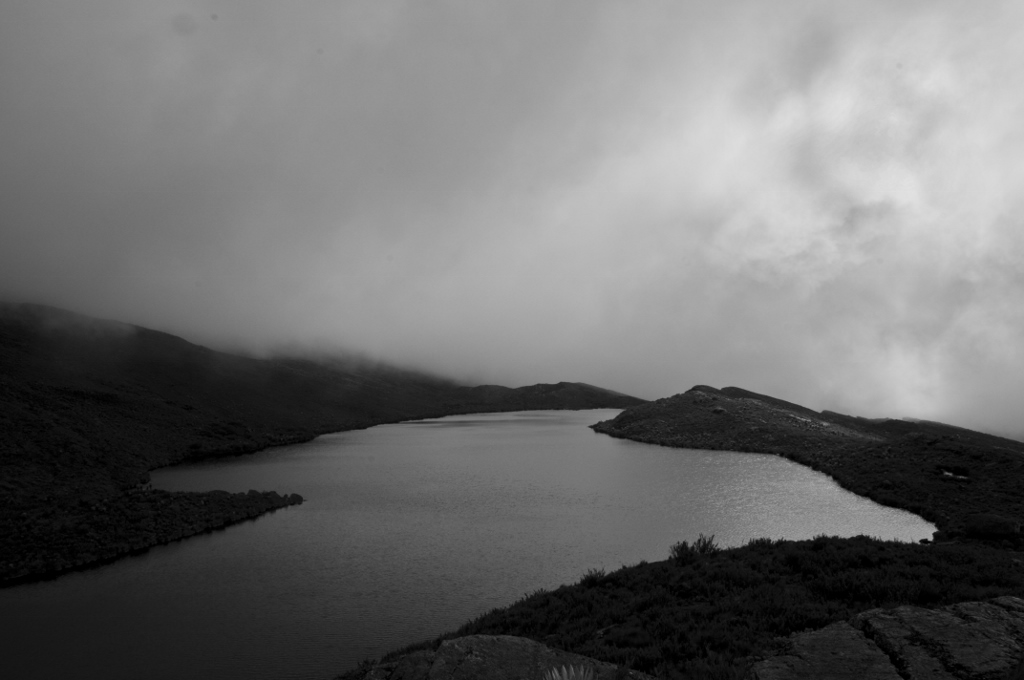
On the second day the fog came rolling in again – the sun, no matter how intense, seems to be no match for it. But I could not lay and wallow any longer so I decided to explore my little isolated haven. I found the elusive lake, further away, and higher, than what my phone map showed. It was good that I did not seek it the other day as I would have lost a lot of day light in my search and dry, flat places were scarce.
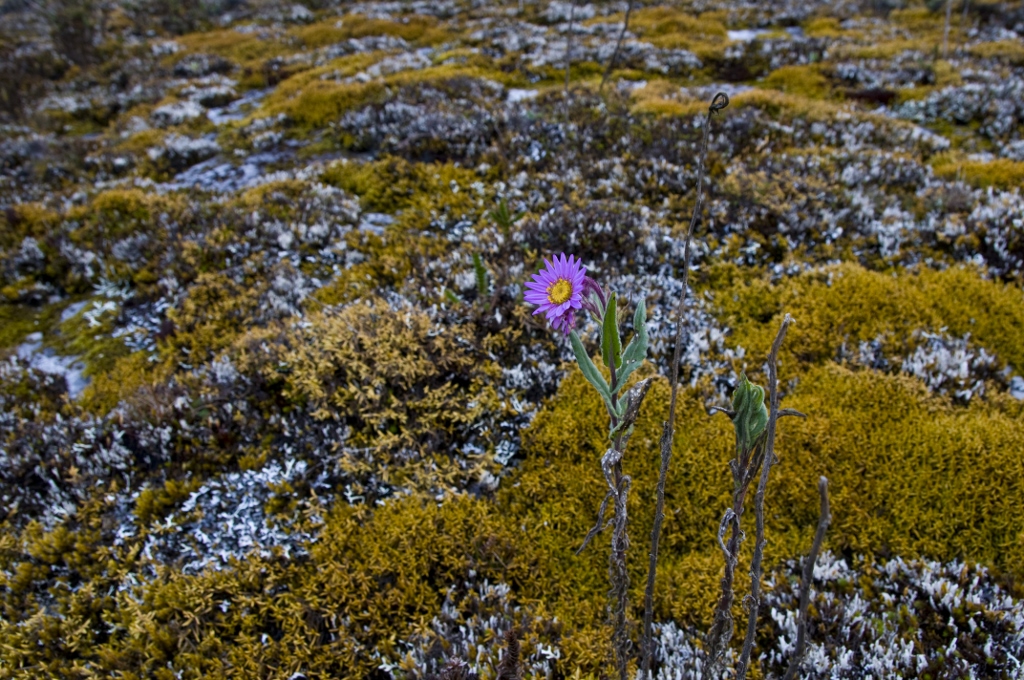
Colombia’s version of an alpine plain is a lovely landscape of mosses, bushes, and a particularly pretty plant which, from a distance, looks like a mix between a cactus and an agave. Up close it looks like tiny sunflowers rising up from a vase of furry leaves growing up, and dryer, pineapple like, ones growing down. The colors of the flora are intense and bright when they are concentrated on furry little leaves that cling to crevices and cracks in mountain walls. But some patches of plants are eerie and wispy, they stand almost like ghosts in the distance, their silvery leaves and sunny heads taunting the senses from their foggy shrouds. There were bare rock strata of many colors running at various angles along the mountains. They threaten of a rougher, more desolate place than what this part of the valley actually is.

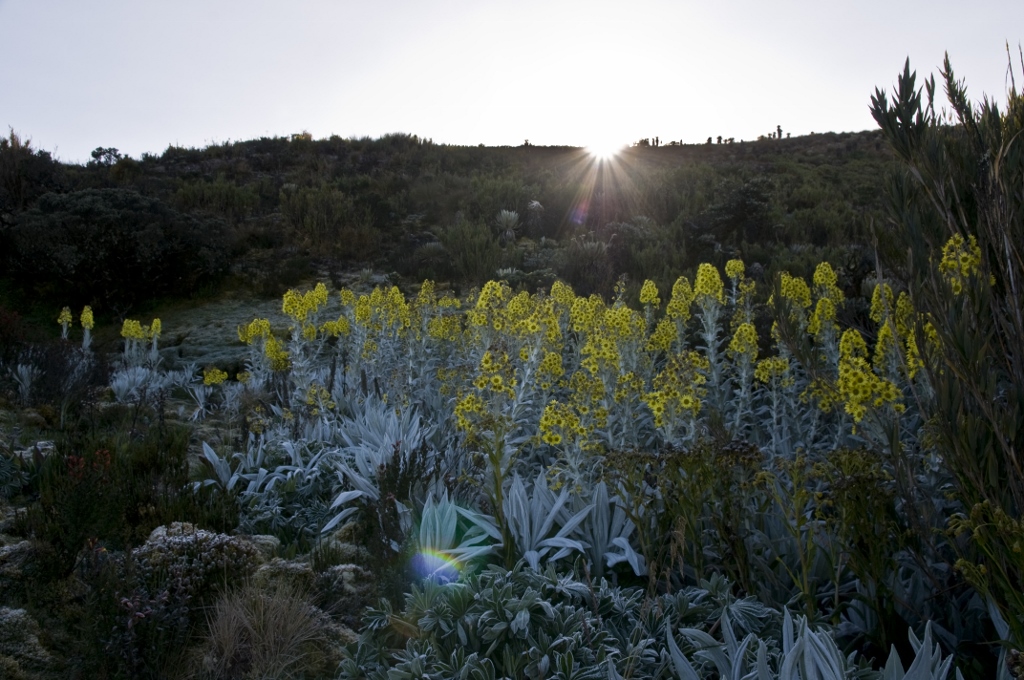
Darkness came quickly, as it tends to do in such places, leaving me under a giant bowl of stars, and every so often a distant meteor would streak the sky for a brief second, and I would unwittingly smile.
The next day, rather than burning up the fog, again, the sun boiled the steamy basin of Colombia’s northern rainforest and sent clouds to cover the valleys and peaks of Cocuy for the majority of the

I began my hike though part Alps, part Middle Earth, at 6am. By 10:30 I found myself on a ridge that snakes from the snowy peaks of the Sierra Nevada down to my humble and foggy little valley. To the north-west nothing but endless, and unexpectedly snowy, mountain peaks dissolving into the familiar distant hues of deep purples and blues. To the east the gradually descending mountains, with unmeasurably high cliffs that form tears in the earth, that lead to the rainforest.

After such a difficult start with my fear of crowding, not finding a place to camp, my physical and mental weakness, the view destroying fog, the elusive lake, the crashes with Georgia, and overweight pack, I was sure this would be a wasted trip. But as I sat alone on the soft, mossy ridge, with a commanding view of all cardinal directions, the sun and wind taking their turns burning and freezing me, I was finally content and happy.

But as always in the mountains the hard-won view was short lived. The fog began engulfing my return route and slowly obscuring the snow and dream filled horizon. I had no real map or GPS and could not see any of the landmarks I had remembered on my way up. I had my phone and was able to see my location relative to the lake – but in the high wilderness “relative” can mean the difference between life and death.
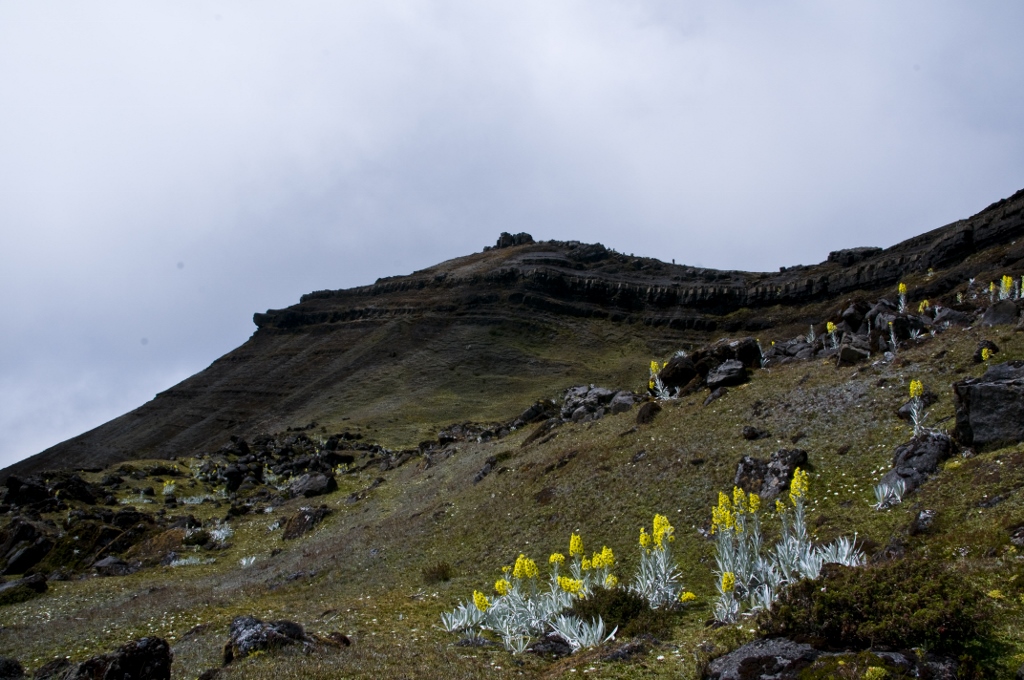
Descending blind in the thick fog I misjudged how far I had to go down and ended up descending more than I remembered climbing. I found myself on a ledge overlooking a cliff with nothing but white in front of me. Eventually I realized that I had traversed to far as well and was on the wrong side of at least one ridge.
In moments of clarity I could see the vertical wall behind me and the 90 degree drop in front of me. I knew I had to traverse back from where I came but I knew not to what end as I would be as blind there as I was on the edge of the precipice where I realized the gravity of my error. The thoughts of slipping and falling hundreds of meters, or being stuck in the open, exposed to wind and below zero temperatures were my constant mental companions. However, I stayed calm. It’s probably the most important things one can do. The second, is to go back up, gain elevation and to re-orient yourself. This however would be fruitless in this case as the peaks would be just as engulfed in fog as the rest of the range. I knew, or rather hoped, that it would clear up as the sun would set, and if I just followed my instincts, the brief, short range, clearings in the fog and the compass on my phone, by the time it would begin to clear I would be within close range of my tent. Walking at night was not an option as I did not have my light, nor would it be very useful as there are no trails and many rises and falls which could obscure my tent even from a few dozen meters distance.
I began my scramble up the mountain in the direction which seemed the least steep and where a brief lull in the fog revealed what looked like a pass over the ridge which would not require professional rock climbing gear. As I made my way in that direction the fog closed in again. For the next three hours it would be the same over and over again.
I stopped often and sat in doubt – was I actually going the right way? At what point should I start to climb down again? There was only so much strength I had for going up and down at that altitude, would I have enough to keep going?
Brief “clearings”, instinct, and a lot of luck finally revealed the side of a ridge on the other side of a narrow valley, and I knew it to be mine. For brief seconds the sun would appear as a perfect, hazy circle in the fog, which confirmed my direction, and in one of those moments it cast enough light on a familiar slope to let me know I would make it before dark.
But all was not yet won as the fog kept coming and limiting my ability to move on immediately and to plan the overall path. I eventually did make it down to the valley and began recognizing landmarks. I couldn’t see my tent and the thought that it had been stolen gripped me as much as doubt over my orientation. Then there was more climbing ahead as I had ventured too far downhill and too far west. As the sun’s rays grew weaker behind the western range, further dimmed by truant clouds, I finally saw the peak of my little gecko colored shelter. I was saved! And that is not an exaggeration as the likelihood of my surviving with no warm clothes or shelter at night, at over 4000 meters, would be quite slim.
The following morning my head continued to throb, as much from the altitude as from the lack of water and sleep during my 3 day solo excursion into the wilderness of Cocuy. The walk back to Georgia was mostly downhill, but it was still exhausting, and the farmer’s dogs, without their master to keep them at bay, barked and bellowed and gnashed their teeth at me for a good half hour.
It was New Years Eve and I wasn’t sure I would have a place to stay when I returned to the town. I rode to my last little unheated hovel and was warmly welcomed again. I almost decided to not leave the room, but could not bear to be alone on New Year’s for the first time in my life, and so I got dressed again in my dirty clothes and went to the town’s square. I met some people from before my trek and we spent the night dancing in the cold mountain air and making fun of the mediocre band. I was in bed by 4am, with no headache, and ready to continue to the first country which actually gave me cause to fear and doubt: Venezuela.















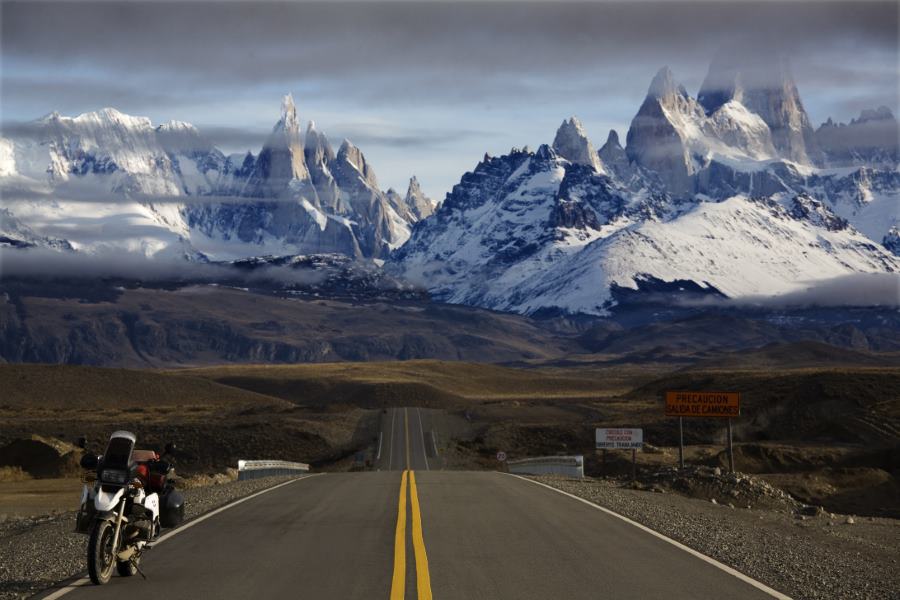

 15Likes
15Likes




















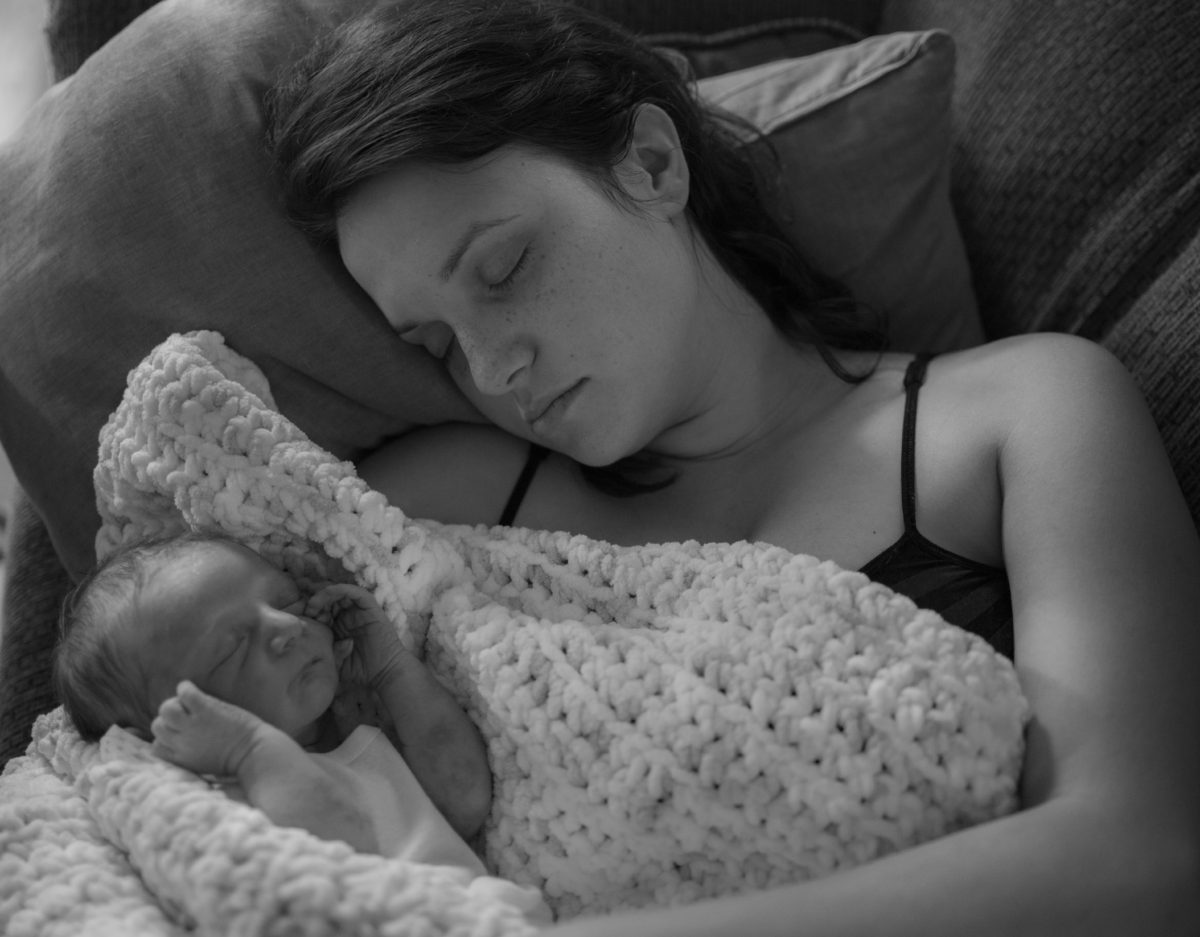


 Linear Mode
Linear Mode










